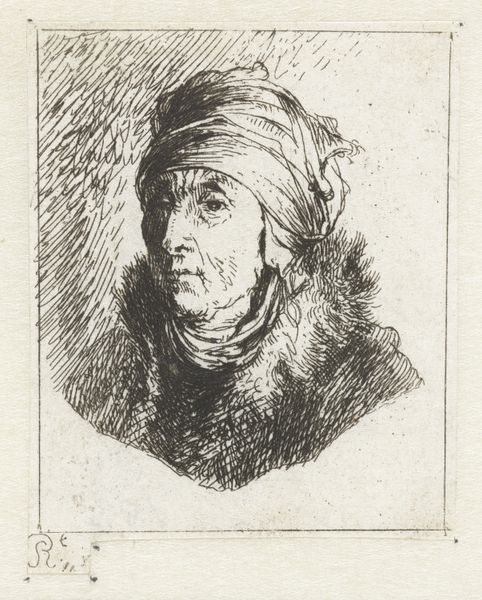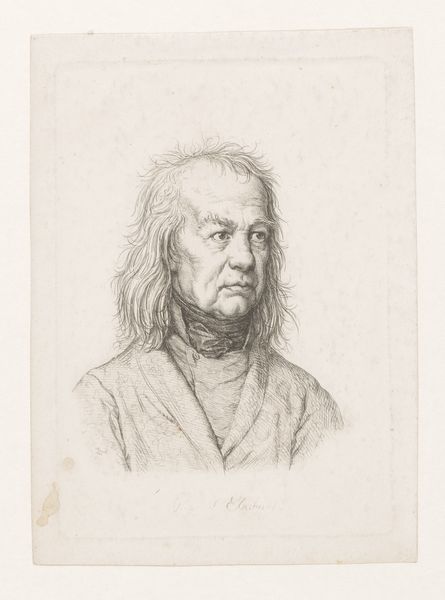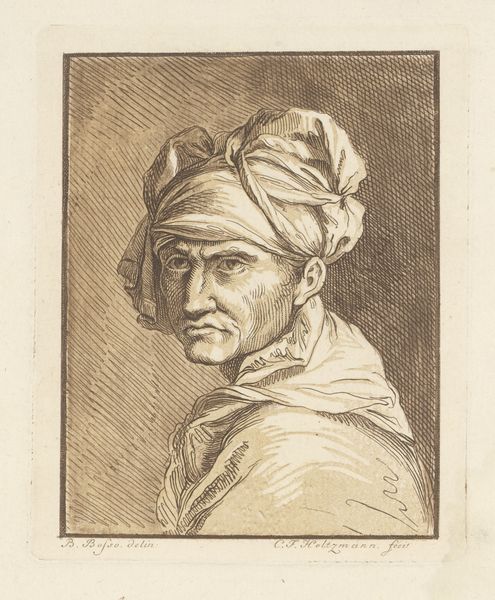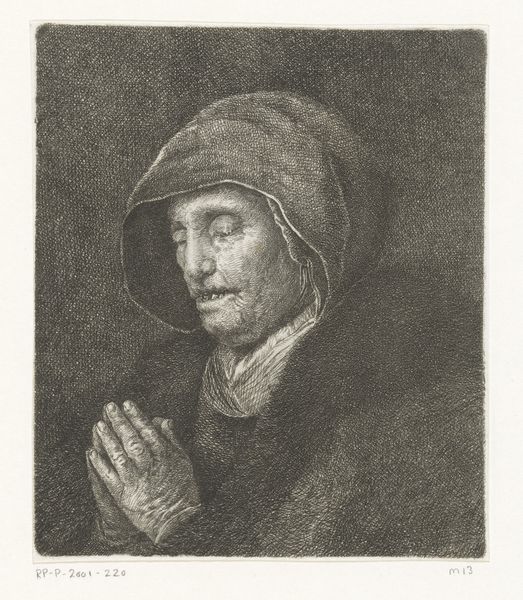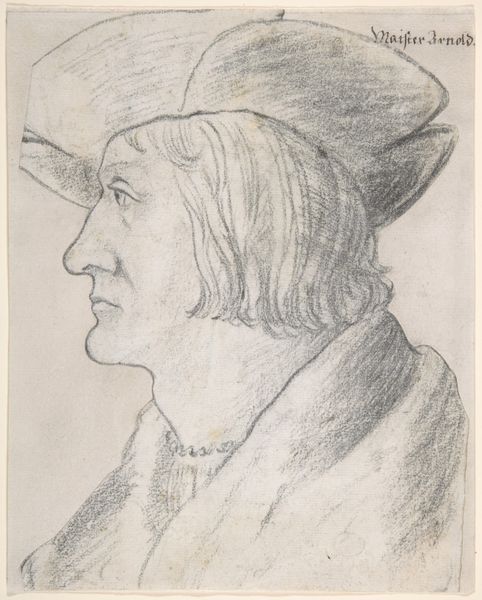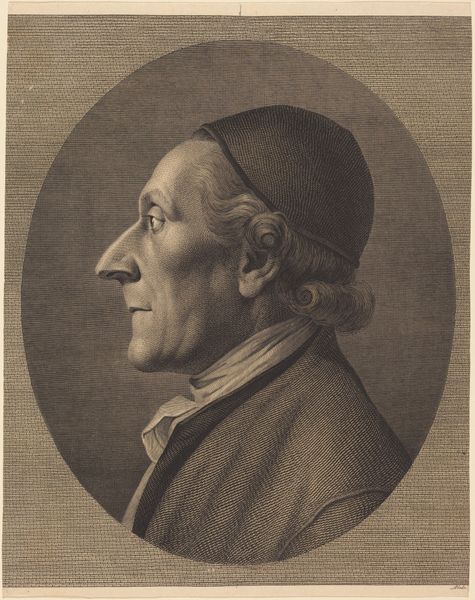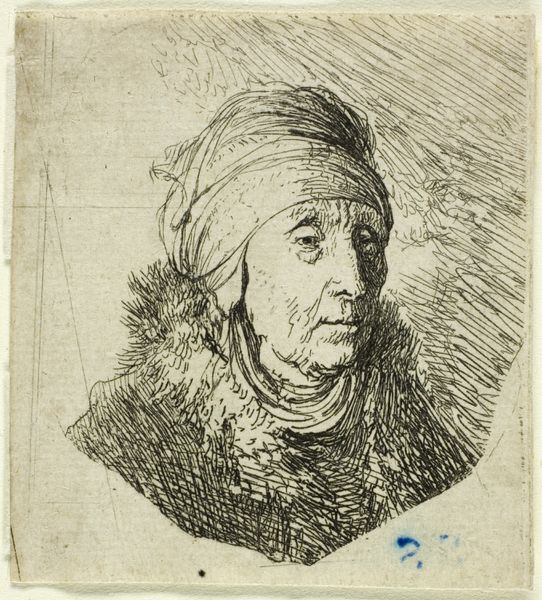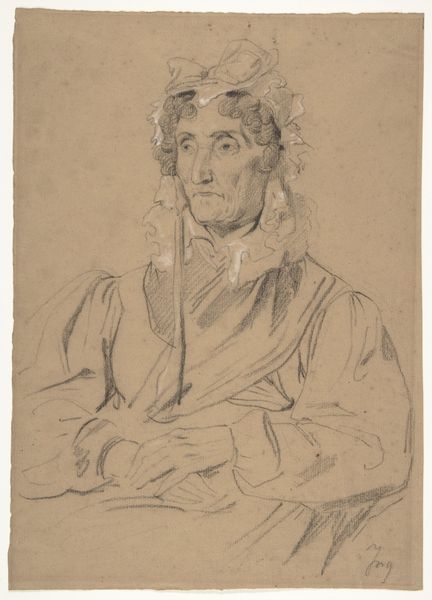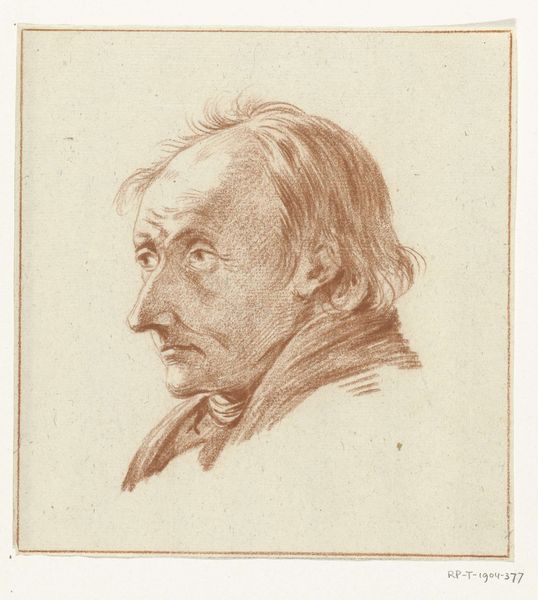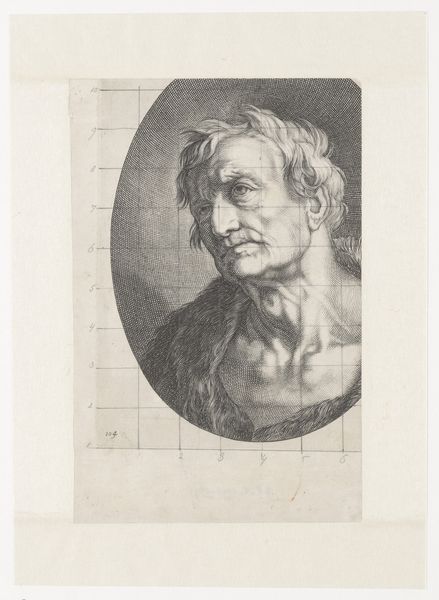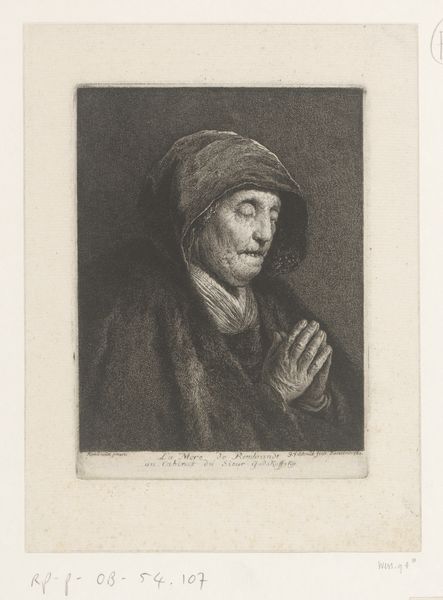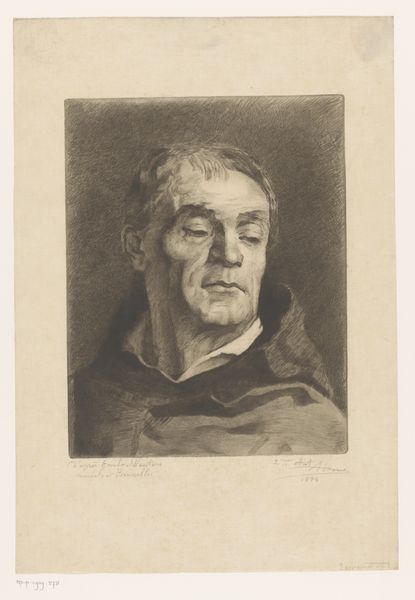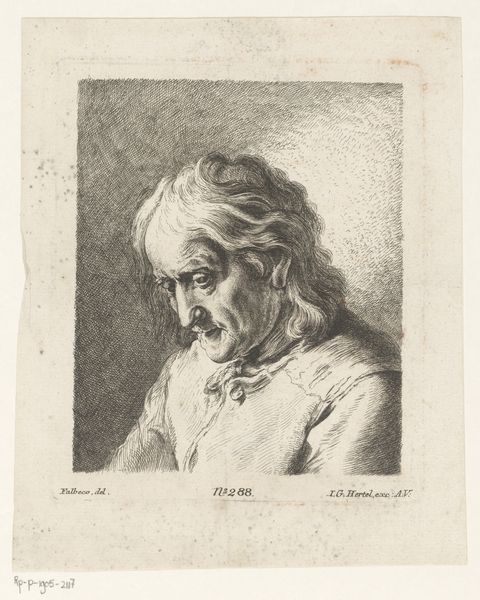
Dimensions: height 132 mm, width 108 mm
Copyright: Rijks Museum: Open Domain
Curator: Before us is "Portret van Johann Kaspar Lavater," an engraving created by Johann (I) Hegi sometime between 1757 and 1799. It depicts the Swiss pastor and physiognomist, Lavater. Editor: My goodness, what a face! It’s got that aged philosopher look, but also a hint of… melancholy? Maybe even a dash of the mischievous imp. Like he knows something we don’t, and he’s secretly amused. Curator: Lavater was quite influential in his time. He believed one could judge character through facial features. This engraving reflects the era's fascination with physiognomy and its intersection with artistic portraiture. Editor: So, he was the celebrity psychologist of the day! Judging books by their covers, faces in this case. I can imagine his parlour being packed! But look at the shading – the way Hegi uses the lines, especially around the eyes, is really masterful. It’s not just capturing a likeness, it’s capturing a soul...or at least, the artist’s idea of one. Curator: Exactly. Hegi uses the techniques of engraving to not only present a likeness but also comment on Lavater’s intellectual standing. Consider the high forehead, often associated with intelligence during that period. This portrait functions both as a likeness and an emblem of his persona. It reflects the prevailing social discourse regarding identity and the physical manifestations of inner character. Editor: And that knowing smirk... was that Hegi’s artistic nudge or Lavater's own sense of irony? It's amazing how a bunch of etched lines can suggest that. It has a quirky Romantic sensibility somehow ahead of its time. What I really respond to, however, is its immediate almost disturbing immediacy. Curator: Perhaps that very ambiguity is the core strength. Hegi captures not only Lavater, but also the entire cultural zeitgeist swirling around the man and his ideas. It invites viewers to participate in their own act of physiognomy, making judgements and ascribing meaning. Editor: Yes, now I am pondering who might commission a modern portrait by similar means! I suspect this work offers something that will never quite go out of fashion, that eternal puzzle of reading the human soul in someone's physiognomy. Thank you for this insight!
Comments
No comments
Be the first to comment and join the conversation on the ultimate creative platform.

